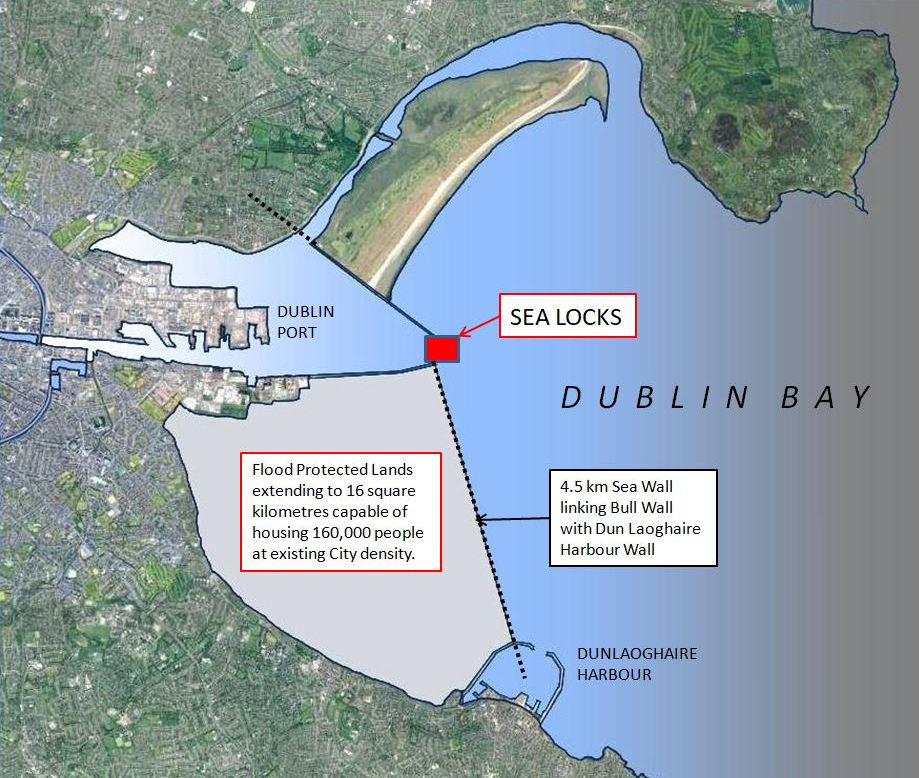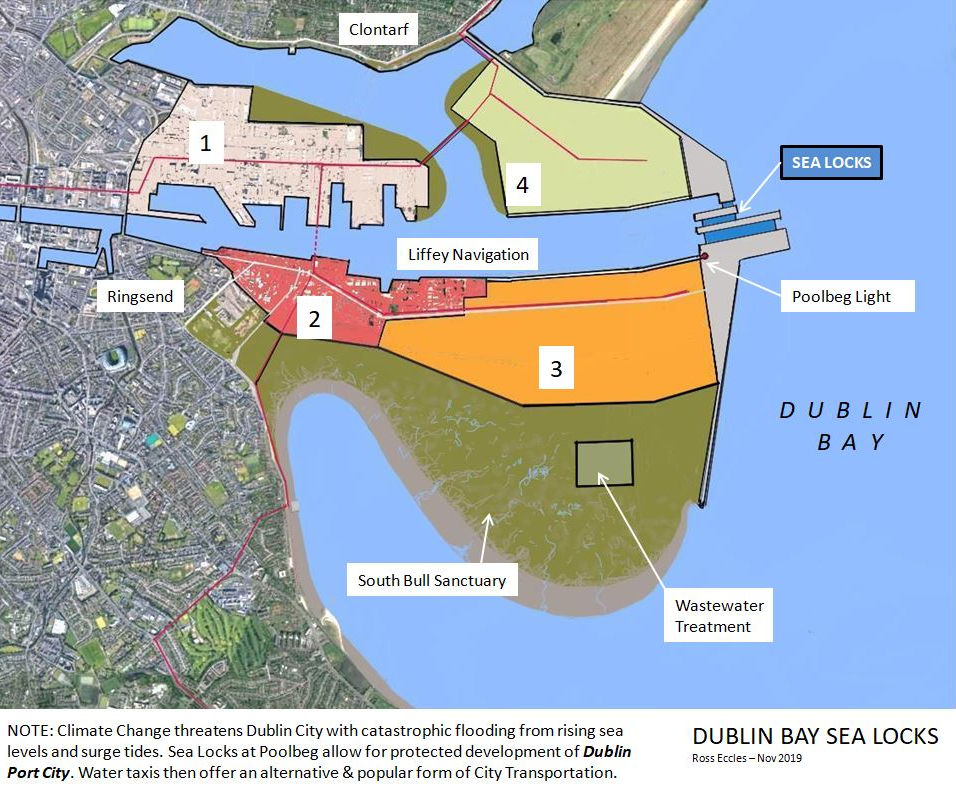
Ross Eccles
artist - architect - concepts designer
creative thinker since 1937
4.5.
DUBLIN BAY CITY
SUSTAINABLE CITY LIVING FOR 160,000 PEOPLE
The Greater Dublin Area continues to expand in a fragmented manner. People are moving to Cities for Jobs and Services and, the population can reasonably be expected to grow to 5,000,000 by 2,100. This is a mere 80 years away in our children's, grandchildren's, or great-grandchildren's lifetime! Most new developments are unthinkingly scattered on greenbelt lands in outer commuter areas . This results in frustratingly slow, carbon-polluting car journey times for many unfortunate victims of bad infrastructural planning!
World population has quadrupled in my lifetime! 500 million EU citizens are now at liberty to move to Dublin. So it is illusory to think that population growth of a vibrant international capital city can be stopped, (excepting by force).
This website contains proposals for alternative Developments at Athlone, Cork, Limerick, Galway etc. but serious investment in well-planned infrastructure and services is required to attract people to these regional locations.
Most would agree that the Dublin City Central Area, desperately needs more housing for its workers. But few would think of Dublin Bay as an ideal Site. Even though it is ideally located within walking and cycling distance of the City Centre. The reason, is of course, that the Bay is Tidal and seen as an unbuildable amenity. But global greenhouse gas emissions have already reached 400 ppm. It means a discourse of environmental contradictions is fast becoming irrelevant.
There are of course, strong arguments for retaining Sandymount Strand and other such shrinking sites against the present flood-tide of ecological destruction. A nationwide policy of rehabilitation of habitats and species, with a rural grants system that supports rehabilitation rather than intensive greenhouse gas production and waterways eutrophication, is the environmentally sustainable alternative.
In my youth, seas and rivers were full of migratory fish and fields were full of nesting curlews, lapwings and skylarks. Would it be so again!
Dublin City is under critical threat from rising sea levels and extreme weather patterns. A "Thames Barrier" type protective barrier at the mouth of the River Liffey is one option. A superior option, is to construct Sea Locks at the mouth of the Liffey by Poolbeg Lighthouse. Similar Sea Locks at IJmuiden already protect Amsterdam from flooding.
By constructing Sea Locks a new horizon of possibilities is opened up. The River Liffey is no longer tidal. So passenger ferries can ply between Clontarf, The Docklands, O'Connell Bridge and as far upstream as Memorial Park Weir without hindrance. By constructing a new 4.5km long Sea Wall, linking the Bull Wall with Dun Laoghaire Harbour, the entire sea frontage between Dun Laoghaire and Clontarf can be protected against flooding. More importantly, 16 square kilometres of land can be recovered from the sea. Enough land to house 160,000 people at the same density as Dublin City.
The graphics below illustrate the Concept.

Dublin Bay City
Dublin Bay - As Existing

Dublin Bay City
Dublin Bay - The process of ongoing change

Dublin Bay City
Sea Locks - Land Reclamation Map

Dublin Bay City
Concept Layout

Dublin Bay City
Sea Locks allow Liffey Navigation
Seiche Wave Protection Plan
The height of the Bay City Locks and Sea Wall is of fundamental importance when designing for Climate Change and Rising Sea Levels
Best professional advice is likely to be found in the Netherlands, which has long experience in flood management. Tidal predictions, are of course based on available data, which can be interpreted in different ways. So a specific Sea Wall height is hard to establish but fundamental to the economics of the Concept.
Dublin Bay is enclosed on 3 sides and, is therefore susceptible to Seiche Wave formation. It is an additional Design consideration.
The Concept Graphic below, shows a network of Canals which not only act as water-borne traffic corridors, but also act as a floodwater relief system in the event of future Seiche Wave over-topping. Wave over-topping is tidal and has a short life. Additional water in the Canals can be pumped to Dublin Bay.

Dublin Bay City
Bay City - Seiche Wave Protection

Dublin Bay City
Dublin Port City - Alternative Layout

Dublin Bay City
Tech City Zone - Concept Layout
